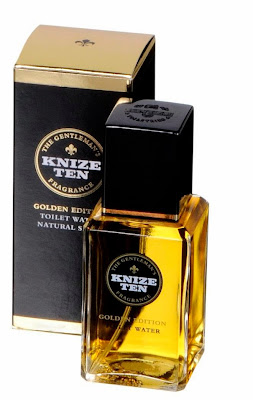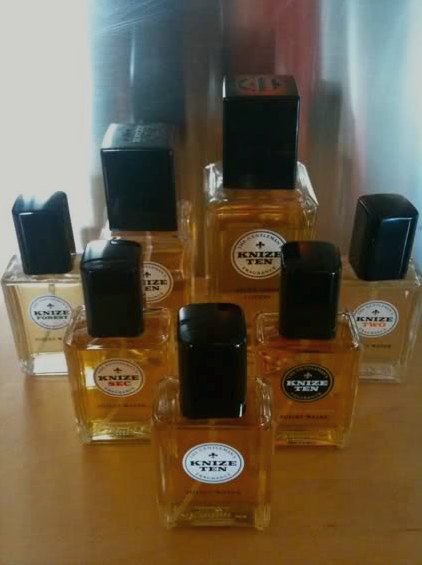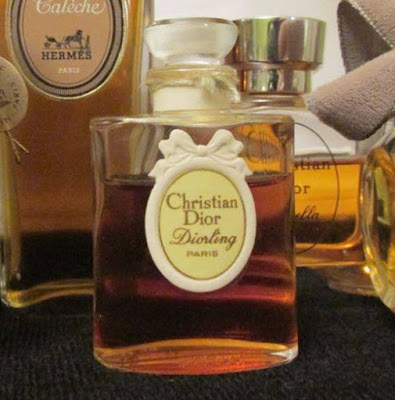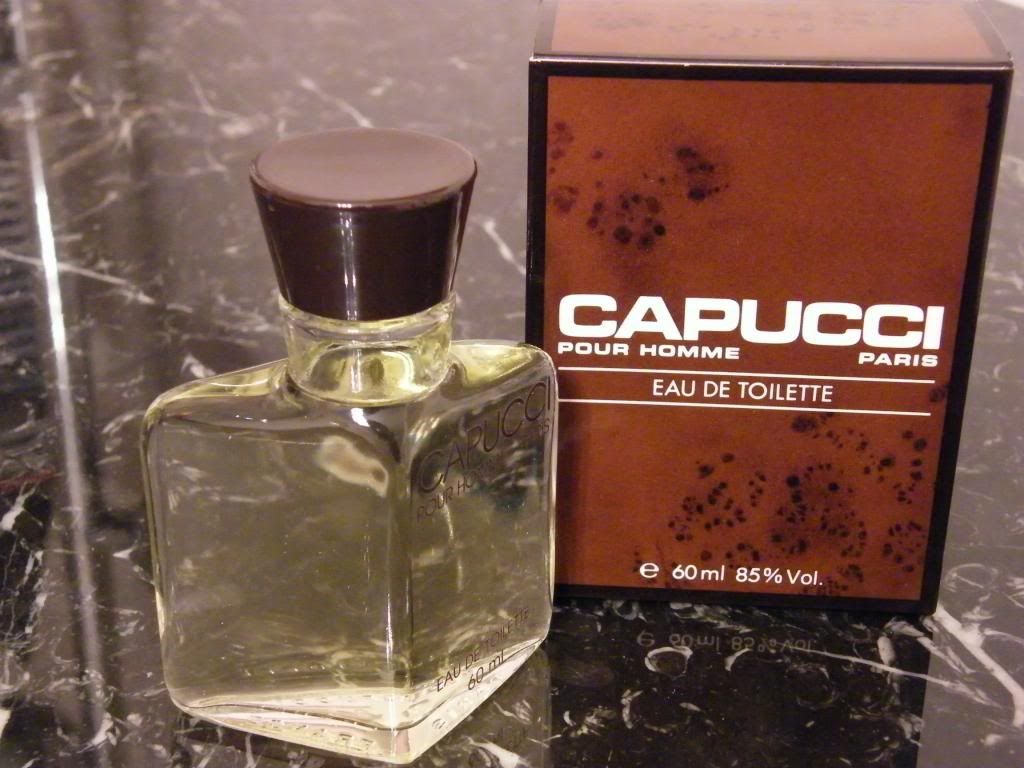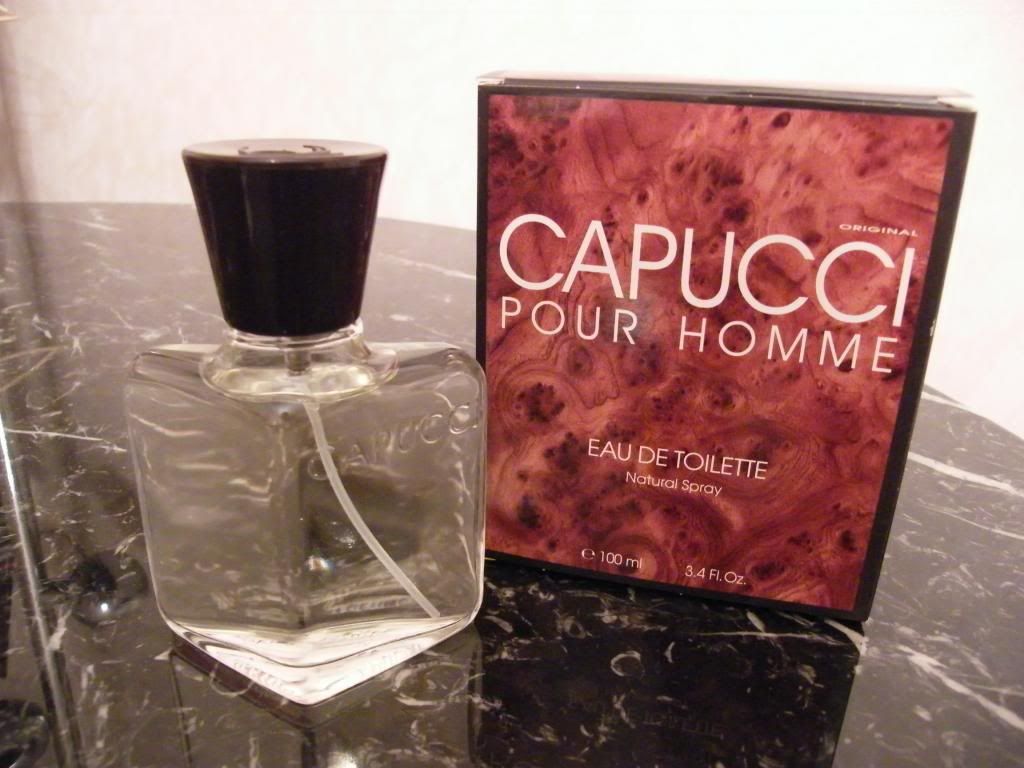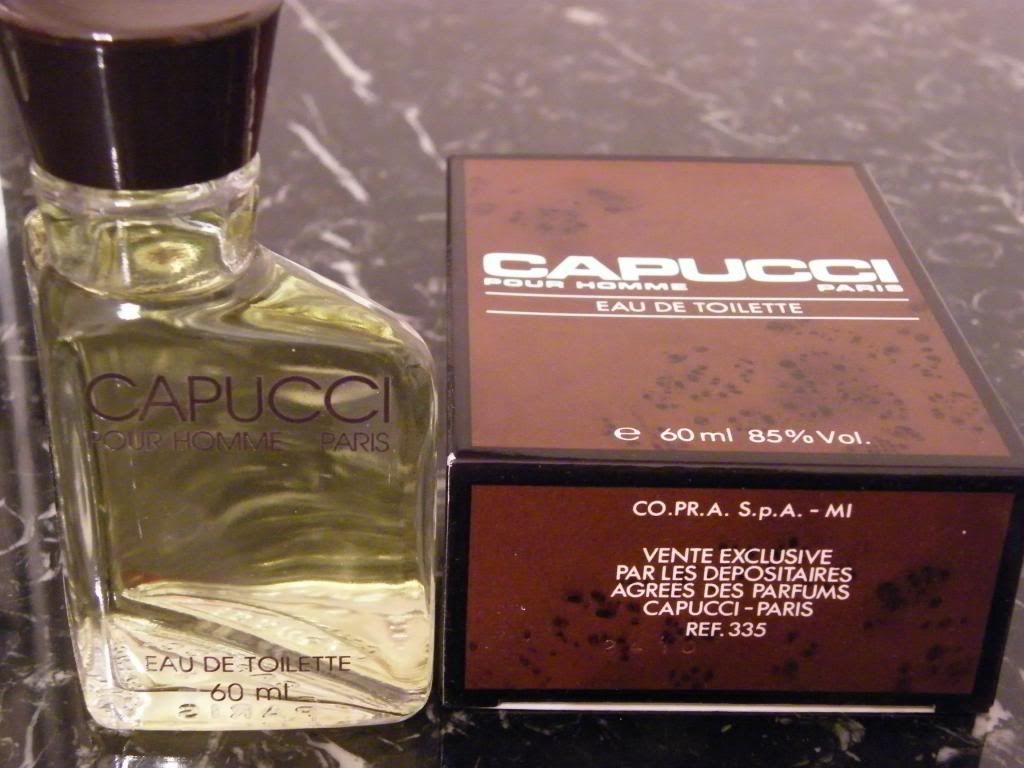FAHRENHEIT by Christian Dior is one of the top-selling perfumes in history, and you can find thousands of pages and articles about it.
In this short essay, the main goal is to summarize the different boxes and bottles produced "year-by-year" since its launch in 1988.
No opinion about "reformulations" will be provided: here you will find a sort of "Exposition".
(Please note: "change in packaging" doesn't always mean "change in formula". You will decide -by smelling- what's best for you. But be careful: Christian Dior's scents are among the most counterfeited ever. Finding authenti bottles is often an hard task. Buy such perfumes only from trusted sellers.
To understand the year of production using the batchcode, see HERE.
To read a personal opinion about Fahrenheit "reformulations" through years using a blind-test, see HERE)
No opinion about "reformulations" will be provided: here you will find a sort of "Exposition".
(Please note: "change in packaging" doesn't always mean "change in formula". You will decide -by smelling- what's best for you. But be careful: Christian Dior's scents are among the most counterfeited ever. Finding authenti bottles is often an hard task. Buy such perfumes only from trusted sellers.
To understand the year of production using the batchcode, see HERE.
To read a personal opinion about Fahrenheit "reformulations" through years using a blind-test, see HERE)
Fahrenheit:
l'Homme infiniment.
Fahrenheit:
l'Homme infiniment.
Fahrenheit:
what never ends, begins here.
(taglines)
--------------------------------------
The First
![]()
![]()
Production : 2005-2006
![]()
--------------------------------------
The First

Production: 1988-2002
Address: "30, Avenue Hoche" (1988-1991); then "33, Avenue Hoche" (since 1991)
Barcode: no EAN barcode (1988-1990). EAN barcode printed on the box, since 1990.
Greendot: No Greendot until 1992. Classic Greendot since 1992, printed on cellophane wrap (1992-1996), then printed directly on box since 1997
Batch-codes: 5/6-digits batchcode printed on the cellophane wrap (1988-1996); then 5/6-digits batchcode printed on the box (1997-1998); finally 4-digits-only batchcode printed on the box (since 1998)
Ingredients: no ingredients printed on the box (1988-1996). Short ingredients list (i.e "Alcohol-Perfume-Water") since 1997.
Alcohol % vol.: (88% EdT or 70% Aftershave) reported on the label applied on bottom of the bottle (1988-1996), then missing.
Alcohol % vol.: (88% EdT or 70% Aftershave) reported on the label applied on bottom of the bottle (1988-1996), then missing.
The Second

Production: 2002-2005
(Key Notes: completely new box without the "Red Planet"
+ word "Dior" written in red on the upper part of the box ;
+ short "ingredients list".
On the bottle: batch code written using a black ink, instead of a silver one).
+ word "Dior" written in red on the upper part of the box ;
+ short "ingredients list".
On the bottle: batch code written using a black ink, instead of a silver one).
The Third
Production : 2005-2006
(Keynotes: on the box, word "Dior" written in silver, set in the lower part of the box + "Eau de Toilette" line set immediately under the word "Fahrenheit" + long "ingredient" list.
On the bottle: "Eau de Toilette" line is as large as "Fahrenheit" one.
On the bottle: "Eau de Toilette" line is as large as "Fahrenheit" one.
--------------------------------
WARNING
Second and Third type could have been mixed
(box and bottle) during years 2005 and 2006
----------------------------------
The Fourth
Production: 2007-2014
(Keynotes: on the bottle, different cap + word "Dior" instead of "Christian Dior Paris" + removing of "Eau de Toilette" line.
On the box: line "Eau de Toilette" written in red, set in the middle)
(Keynotes: on the bottle, different cap + word "Dior" instead of "Christian Dior Paris" + removing of "Eau de Toilette" line.
On the box: line "Eau de Toilette" written in red, set in the middle)
The Fifth

Production: end of 2014 - ongoing
(Keynotes: change of box + change of Christian Dior's "CD" logo)
-----------------------------------------------------------------------------------------------
FAHRENHEIT at a glance
----------------------------------------------------------------------------------------------
The "Red/Burning Planet" on the box: from 1988 until 2002
The "rounded", curvy cap: from 1988 until end of 2006
The logo on the bottle: "Christian Dior" from 1988 until 2005 (then simply "Dior")
The logo on the box: "Christian Dior" from 1988 until 2002 (then simply "Dior")
The "Eau de Toilette" label on the bottle: narrow (1988-2005); large (2005-2006); missing at all (since 2007)
------------------------------------------------------------------
FAHRENHEIT
Year-by-year
-------------------------------------------------------------------
1988
-------------------------------------------------------------------------------
1989
--------------------------------------------------------------------------
Mysterious bottle with unusual batch-code
(pic sent from Olga L. from Russia)
------------------------------------------------------------------------------
1991
-----------------------------------------------------------------------------
1993
1995
------------------------------------------------------------------------------
1996
Since 1998: 4-digits batchcodes
(1998-2007: letters within the first half of alphabet, "A-to-M")
(since 2008: letters within the second-half of the alphabet, "N-to-Z")
---------------------------------------------------------------------------------
1998
-----------------------------------------------------------------------------
2000
FAHRENHEIT at a glance
----------------------------------------------------------------------------------------------
The "Red/Burning Planet" on the box: from 1988 until 2002
The "rounded", curvy cap: from 1988 until end of 2006
The logo on the bottle: "Christian Dior" from 1988 until 2005 (then simply "Dior")
The logo on the box: "Christian Dior" from 1988 until 2002 (then simply "Dior")
The "Eau de Toilette" label on the bottle: narrow (1988-2005); large (2005-2006); missing at all (since 2007)
------------------------------------------------------------------
FAHRENHEIT
Year-by-year
-------------------------------------------------------------------
1988
from Sims1974, Basenotes Fahrenheit, batch 8R260 printed on the cellophane wrap = year 1988 (old address "30 Avenue Hoche"). There aren't any Barcode / Greendot / Ingredients |
 |
| From Zezzy, Basenotes batch 8Y532 = year 1988 (note the old address "30, Avenue Hoche") |
-------------------------------------------------------------------------------
1989
| Batch 9843N = year 1989 |
| Batch 9808M = year 1989 note the old address "30, Avenue Hoche" |
Mysterious bottle with unusual batch-code
(pic sent from Olga L. from Russia)
------------------------------------------------------------------------------
1991
 |
| (pic from Mariusz, Poland) Batch 1H213 = year 1991 |
1993
 | ||
Batch 3608N = year 1993 (EdT 200ml ) (note the new address "33, avenue Hoche") -----------------------------------------------------
|
| batch 5N117 (50 ml aftershave) and 5N105 (100ml Edt) = year 1995 |
 |
| From Jason Newton, www.uneasynostalgia.com batch 5K716 = year 1995 |
Batch 5N103 = year 1995 Batchcode and Greendot printed on the cellophane wrap. |
.jpg) |
| From Jason Newton , www.uneasynostalgia.com Year 1995 box, without cellophane wrap; Apparently there are no clues: batchcode and greendot were printed on the cellophane. |
------------------------------------------------------------------------------
1996
 |
| batch 7473J = year 1997 (Batchcode and Greendot printed directly on the box) ------------------------------------------------------------------------------------- |
(1998-2007: letters within the first half of alphabet, "A-to-M")
(since 2008: letters within the second-half of the alphabet, "N-to-Z")
---------------------------------------------------------------------------------
1998
 |
| from RipJean, Basenotes.net batch 8Gxx = year 1998 |
 |
| From LornaMay, Basenotes.net batch 8D02 = year 1998 |
 |
| from RipJean, Basenotes.net Year 1998 box, with ingredients on the side. |
8H01 = year 1998 |
| Batch 9G01 = year 1999 |
| AfterShave Box, year 1999 |
2000
| batch 0L01 = Year 2000 |
| from 61824, Basenotes. batch 0F02= year 2000 |
 |
| AfterShave boxes labelled 1M01 and 0M02, both sides. = Years 2001 and 2000, respectively (thanks to Catia) |
.jpg) |
| From Jason Newton , www.uneasynostalgia.com batch 0G02 = year 2000. |
2001
 |
| from Nfn1983, Basenotes 1J01 = year 2001 |
 |
| (from PaulP, Basenotes) 1K01 = year 2001 ------------------------------------------------------------------------------------------------------------------------ |
it's the "Second type".
The red word "Dior" in the upper part of the box.
Bottle is similar to the previous one.
Batchcode on bottle written with black ink

Second-type box and bottle

check the red word "Dior" in the upper part of the box.
--------------------------------------------------------------------------------------------
2002
 |
| Batch 2G01 unusually print on the side of the bottle = year 2002 (thanks to Kenneth Edward) |
 |
| Bottle without the batchcode on the bottom; check the border of the bottle for it. (from Kenneth Edward) |
 |
| Batch 2G01 (year 2002) bottle You can see the batch printed immediately under the word "Christian" |
-------------------------------------------------------------------------------
2004
 | ||
Second Type box, Batch 4L01 = Year 2004 (note the short ingredients list "alcohol-fragrance-water", it was used until 2005 )
------------------------------------------------- Long list of ingredients ("...limonene, linalool, coumarin....") printed on the box. ------------------------------------------------ 2005 during early 2005.... (from szafa.pl) Batch 5E02, (still the "Second Type" bottle , with the narrow line "eau de toilette") since approx. half of 2005 New box and bottle ("Third type"), used for just a couple of years. The best way to recognize it is to check the line "Eau de Toilette" on the bottle, as large as the word "Fahrenheit". |
new box and bottle (Third type, 2005-2006)
with the larger line "Eau de Toilette"on the bottle
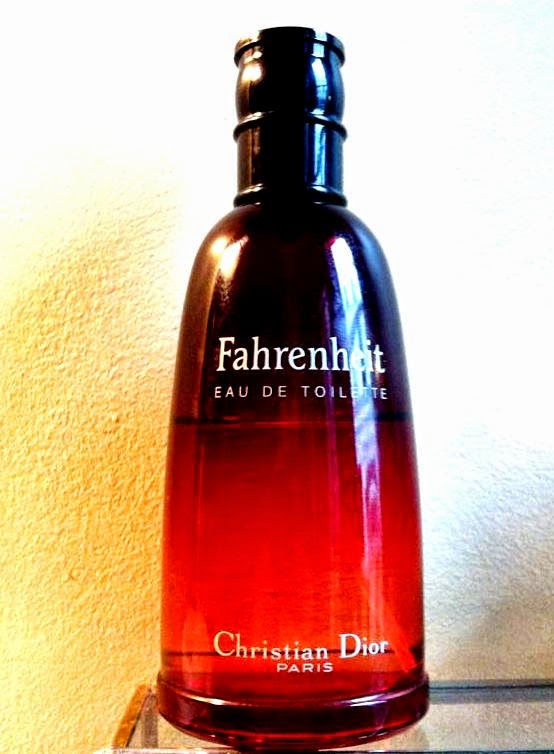 |
Batch 5F06, Third Type, (thanks to Roberto Greco) (note the line "Eau de Toilette" as large as "Fahrenheit") |
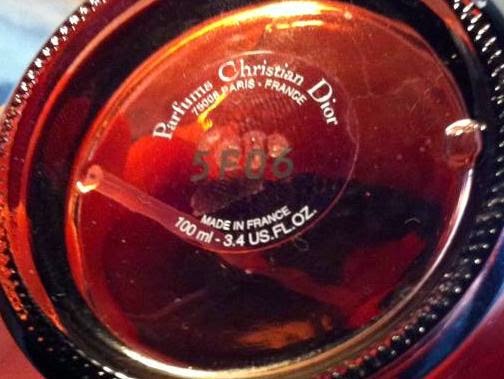 |
| batch 5F06 = year 2005 |
 |
| (from "Kwachu", Poland) batch 5K02 = year 2005 |
| Batch 5G02 = year 2005 (note, for the first time, the long list of "ingredients" on the box) |
2006
"Third type" bottle,
batch 6F02 = year 2006
------------------------------------------------------------------
Year 2007: another new packaging.
New box and new bottle ("Fourth type", 2007-to-2014).
Bottles sport the word "DIOR"
instead of "Christian Dior Paris"
+ a different cap
+ the line "Eau de Toilette" removed from the bottle.
![]()
New box ("Fourth type", 2007-2014)
![]()
New Bottle ("Fourth type", 2007-2014)
-------------------------------------------------------------------------
2007
"Third type" bottle,
batch 6F02 = year 2006
------------------------------------------------------------------
Year 2007: another new packaging.
New box and new bottle ("Fourth type", 2007-to-2014).
Bottles sport the word "DIOR"
instead of "Christian Dior Paris"
+ a different cap
+ the line "Eau de Toilette" removed from the bottle.

New box ("Fourth type", 2007-2014)

New Bottle ("Fourth type", 2007-2014)
-------------------------------------------------------------------------
2007
 | ||||||||||||
Batch 7H02 = year 2007 (30ml EdT)
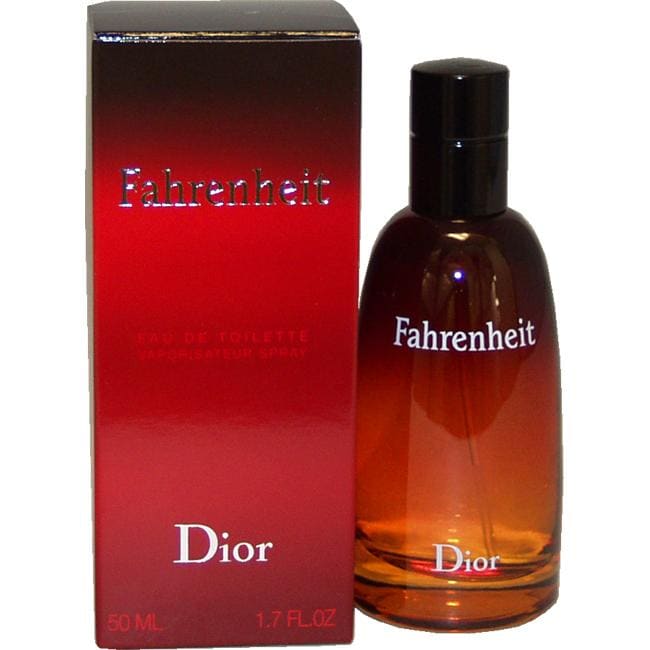 "Fourth type" bottle and box during end of 2007 ---------------------------------------------------------------- -WARNING- during these years, we can see a sort of mixing boxes with different bottles, and different labels and caps.... Be careful with unusual combinations. -------------------------------------------------------------------------------- (since 2008: batchcode using letters N-to-Z)
------------------------------------------------------------------------------------------------------------------------------ 2009
-------------------------------------- WARNING during 2009-2014, if you read "Eau de Toilette Intense", it's "Fahrenhetit Absolute", not the classic fragrance. (see "Fahrenheit Flankers" below) ---------------------------------------------------------------- 2010
batch 0Z02 = year 2010, december ---------------------------------------------------------------------------------------- since 2011: "description" on the back of the box. ---------------------------------------------------------------------------------------- 2011 |
 |
| ( from Gid, Basenotes ) batch 1X01 = year 2011 |
---------------------------------------------------------------------------------
WARNING
if you read on the label "125ml, 4.2fl.Oz"
instead of "100ml, 3.4fl.Oz",
it's "Aqua Fahrenheit", a flanker launched in 2011
Aqua Fahrenheit, launched in 2011
----------------------------------------------------------------------------------
2012
 | ||
Batch 2R01 = year 2012 (100ml EdT) -----------------------------------------------------------------------
|
FAHRENHEIT FLANKERS
----------------------------------------------------------------------------------
-------------------------------------
year 2002: Fahrenheit Summer
(limited edition, discontinued)
------------------------------------------------------------
year 2003: Fahrenheit 0 Degree
(discontinued in 2014)

-------------------------------------------------------------
Year 2006: Fahrenheit Summer
(limited edition, discontinued)

--------------------------------------------------
Year 2007: Fahrenheit 32
(currently in production)

and: Fahrenheit Summer 2007
(limited edition, discontinued)

------------------------------------------------------------
Year 2009: Fahrenheit Absolute
(discontinued in 2014)

---------------------------------------------------------------------------------------------
Year 2011 : Aqua Fahrenheit
(currently in production)
(currently in production)

-----------------------------------------------------------------------------
Year 2014: Fahrenheit le Parfum
(currently in production)
(currently in production)

---------------------------------------------------------------------------





.jpg)














































































